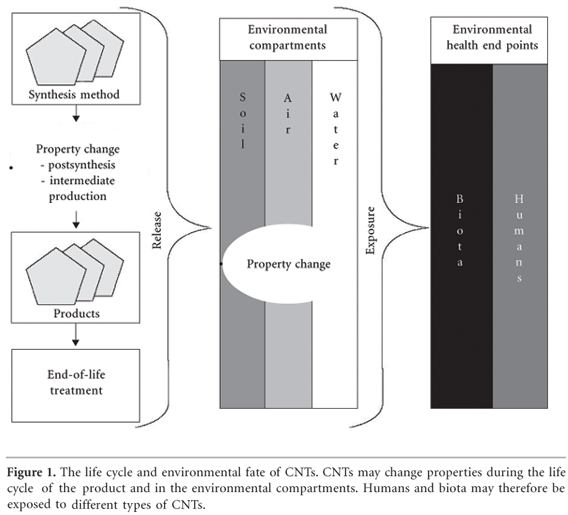Carbon nanotubes (CNTs) are one of the most promising materials in nanotechnology. The various synthesis, purification and postprocessing methods produce CNTs with diverse physical characteristics, appliable in many fields. Their extensive projected use makes it important to understand their potential harmful effects. Besides showing a notable range of results of some toxicology studies, this review concluded that: a) there are different types of CNTs; thus, they cannot be considered a uniform group of substances; and b) in environmental compartments, CNTs can be bioavailable to organisms. Their properties suggest a possible accumulation along the food chain and high persistence. In organisms, CNT absorption, distribution, metabolism, excretion and toxicity depend on the inherent physical and chemical characteristics (e.g., functionalization, coating, length and agglomeration state), influenced by external environmental conditions during CNT production, use, and disposal. Thus, characterized exposure scenarios could be useful in toxicology studies. However, upon reaching the lungs in enough quantity, CNTs produce a toxic response (time and dose-dependent). The risks to human health and environment should be identified for a successful introduction of CNTs in future applications.
Carbon nanotubes; Cytotoxicology; Environment; Human health; Nanotechnology

